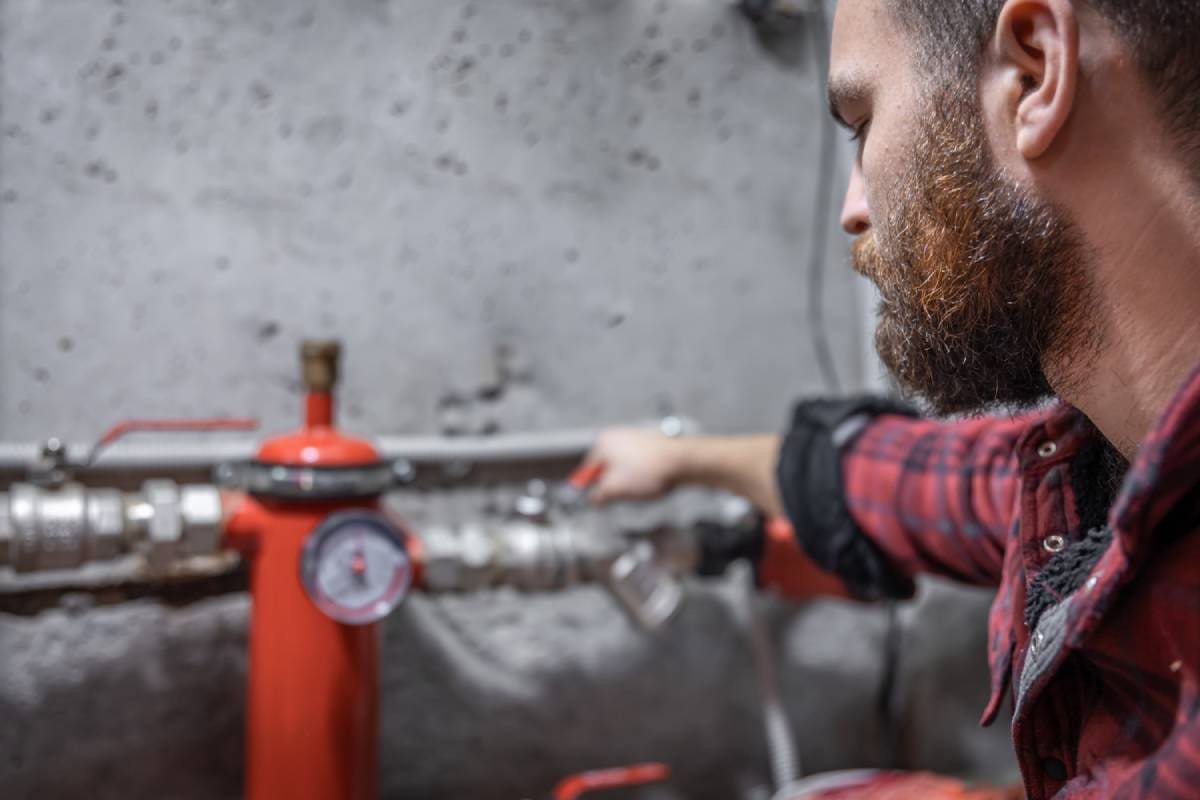What're your beliefs about What to Know About Plumbing: Basics, Tips, and Insights?

Plumbing is an essential facet of any kind of home, in charge of supplying clean water for alcohol consumption, food preparation, and showering, in addition to removing wastewater safely. Recognizing the fundamentals of home plumbing is vital for each homeowner to ensure correct upkeep, troubleshooting, and, if required, repairs. In this novice's guide, we'll cover the basic ideas of home plumbing to assist you become extra aware of exactly how it functions.
Water System System
The water supply system brings tidy water into your home from a metropolitan water resource or a private well. It contains a main water line that attaches to your home's plumbing system, normally situated underground. A water meter measures the quantity of water consumed, while a shut-off shutoff allows you to regulate the flow of water right into your home.
Plumbing Fixtures
Plumbing components are tools that deliver water to numerous parts of your home and include sinks, taps, toilets, showers, tubs, and appliances such as dishwashing machines and cleaning machines. Each component is attached to the supply of water system using pipes and installations and may have its shut-off valve for upkeep or emergencies.
Water Heating System
The water furnace is responsible for home heating water for residential usage, consisting of bathing, cooking, and cleaning. Typical sorts of hot water heater include tank-type hot water heater, tankless (on-demand) water heaters, and heatpump hot water heater. The hot water heater is attached to the supply of water system and provides warm water to plumbing components as required.
Drainage System
The drainage system gets rid of wastewater from your home and brings it away to a sewer treatment center or septic system. It includes a network of pipes, installations, and components that carry wastewater from plumbing fixtures to the main sewage system line or sewage-disposal tank. Correct drainage is important to avoid clogs, back-ups, and sewer leaks.
Ventilation System
The ventilation system assists maintain appropriate atmospheric pressure and protect against sewer gases from entering your home. Vent pipelines, additionally called air vent stacks, expand from plumbing components to the roofing, enabling drain gases to run away safely outdoors. Ventilation pipelines likewise allow air to enter the drainage system, promoting smooth wastewater circulation and avoiding suction or vacuum cleaner effects.
Usual Plumbing Tools
Having the right devices on hand is important for carrying out standard plumbing repair services and upkeep tasks. Usual plumbing devices consist of flexible wrenches, monkey wrench, pliers, pipeline cutters, hacksaws, bettors, augers (or drainpipe serpents), and Teflon tape. Having these tools readily offered can help you tackle small plumbing concerns efficiently.
Basic Plumbing Repair Services
While some plumbing repair services might call for professional assistance, many usual concerns can be attended to with basic do it yourself methods. Knowing how to deal with a leaking faucet, unblock a drain, replace a bathroom flapper, or repair a trickling showerhead can save you money and time on plumbing repair services.
Final thought
Understanding the essentials of home plumbing is vital for every house owner to maintain a secure, functional, and reliable plumbing system. By familiarizing on your own with the water system system, plumbing fixtures, drain system, air flow system, common plumbing devices, and basic repair services, you can confidently attend to small plumbing problems and guarantee your home's plumbing system operates efficiently.
Understanding Basics of Home Plumbing System: A Beginner's Guide
The Main Components of Your Home Plumbing System
The Water Supply System
This system is responsible for transporting fresh water into your home. It usually has a main water line that splits into two branches: one directed towards cold water services and the other connected to a water heater for hot water. The pressure is key here; it ensures water reaches all parts of your house.
The Drainage System
Once water has been used, it becomes wastewater that needs to be removed from your home. This is where the drainage system comes into play. It includes all the pipes that carry wastewater and sewage away from your house to sewage treatment facilities or septic tanks.
The Vent System
The vent system prevents sewer gases from entering your home and helps maintain the pressure balance that allows wastewater to flow out properly. These vents usually exit through the roof of your house.
Water Heating System
For those who enjoy hot showers or using hot water for cleaning, the water heater is a crucial part of the plumbing system. It can be a tankless system, which heats water on demand, or a traditional water tank model.
Common Plumbing Problems and Basic Troubleshooting
Plumbing systems, while designed to be durable, can face issues like clogged drains, leaky faucets, or low water pressure. Here are some basic troubleshooting tips:
Clogged Drains
Use a plunger or a plumber's snake to try and dislodge whatever is blocking the drain. Regular cleaning can prevent clogs.
Leaky Faucets
Often caused by worn-out washers or gaskets, these can usually be replaced by someone with basic DIY skills.
Low Water Pressure
This might be due to sediment build-up in your fixtures or a leak somewhere in your water line. Cleaning out aerators or seeking a professional to detect leaks might be necessary.
Preventive Maintenance Tips
Maintaining your plumbing system is key to avoiding emergencies. Regularly check for leaks, avoid disposing of grease down the sink, and have your system inspected by a professional plumber at least once a year.

I have been very focused on Understanding the Basics of Your Home's Plumbing System and I'm hoping you liked our blog entry. Be sure to take the time to promote this blog post if you appreciated it. Thank you for your time spent reading it.
Call Today